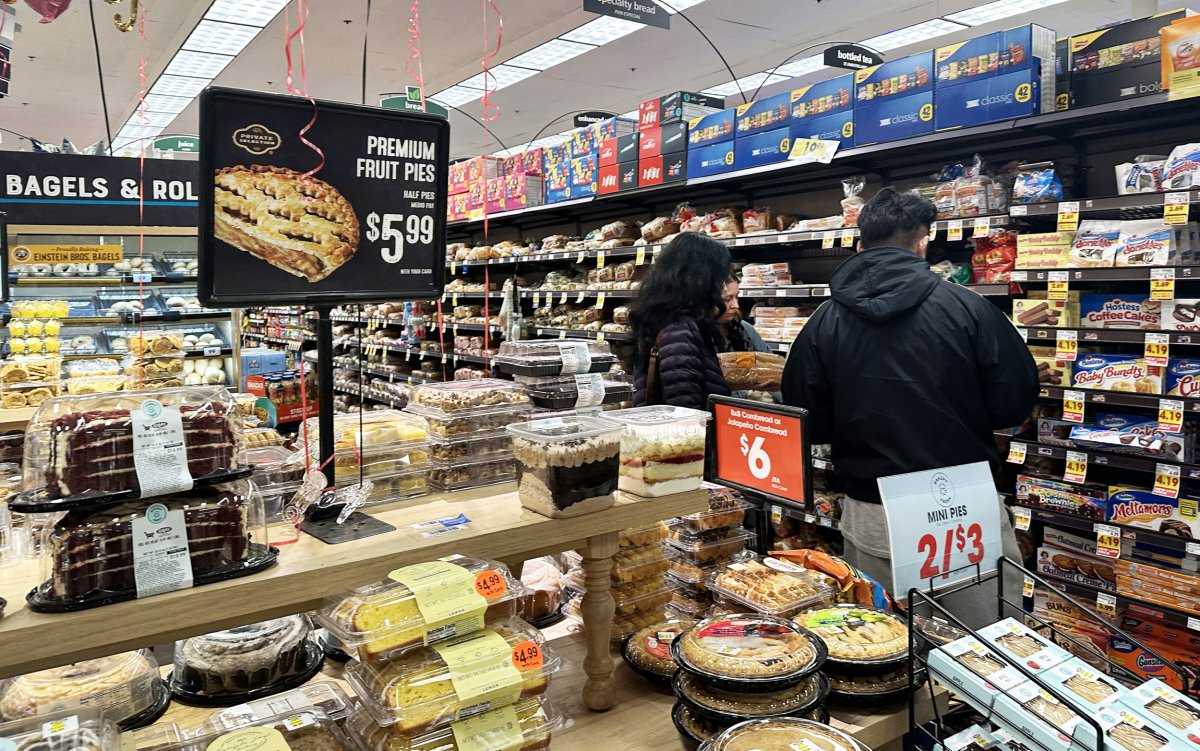President Donald Trump imposing a 20 percent tariff could cost the average American household up to $4,200 a year, according to an analysis by The Budget Lab at Yale University.
Why It Matters
Trump is set to announce “reciprocal” tariffs on Wednesday, which he has called “Liberation Day.”
He has said the tariffs will boost United States manufacturing and address unfair trade practices. However, some economists say the move could cause the economy to slide into a recession and that importers would likely pass some of the cost of the duties to consumers in the form of higher prices.
What To Know
The Budget Lab’s analysis found that a broad 20 percent tariff would raise consumer prices by between 2.1 and 2.6 percent if the Federal Reserve did not take action.
“This is equivalent to a loss of purchasing power of $3,400-4,200 per household on average in 2024 dollars,” the analysis said.
The analysis found that tariffs would burden households with lower incomes more.
If broad 20 percent tariffs are implemented and other countries retaliate with tariffs of their own, the disposable income of the lowest-income households could drop by 5.5 percent, while it would drop by just 1.9 percent for the highest-income households.

Frederic J. Brown/AFP via Getty Images
According to the analysis, the tariffs would cost households in the second lowest income decile, on average, $2,400 when other countries retaliate. For households in the middle, it would be $3,800 per household on average, and for those in the top tenth, it would be $9,500 per household on average.
The analysis found that food prices would rise on average by about 3.7 percent. In comparison, the Consumer Price Index showed that food at home prices grew by 1.9 percent in the 12 months to February this year.
Details of the tariff plan that Trump will unveil on Wednesday remain unclear.
The Washington Post reported on Monday that White House aides are weighing a plan that would impose tariffs of about 20 percent on products from nearly every country instead of targeting certain countries or products.
What People Are Saying
Ernie Tedeschi, director of economics at the Budget Lab at Yale, told Newsweek: “Obviously it’s still unclear whether this is the policy that will be announced. But with that caveat: this idea would bring tariffs back to where they were in America in the early 1900s. It would raise about $3 trillion over a decade—enough to pay for about half of the tax cut extension—but it would also raise prices by the equivalent of more than a year’s worth of normal inflation and cut U.S. economic growth in 2025 in half.”
President Donald Trump told reporters on Monday: “They’re reciprocal, so whatever they charge, we charge them. But we’re being nicer than they were.”
White House press secretary Karoline Leavitt told reporters on Tuesday that Trump’s tariff plan is “going to work. The president has a brilliant team of advisers who have been studying these issues for decades. We are focused on restoring the golden age of America and making America a manufacturing superpower.”
University of Chicago Economics Professor James Heckman told Newsweek on Tuesday: “The fear of tariffs and the uncertainty about their magnitude and duration is causing the recession.”
What Happens Next
Trump will announce the new tariffs at an event in the White House Rose Garden at 4 p.m. ET. Leavitt said the tariffs would take effect immediately after Trump’s announcement.


